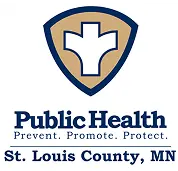A conversation about cannabis is worth having*
*Informed decisions start with information

This educational campaign explores how cannabis affects developing brains, and practical steps adults can take to protect kids and support healthy choices.
The Facts*
*Understanding the facts helps prevent harm, reduce misinformation, and encourage conversations across families and communities.
Today’s cannabis is stronger than ever before.
On average, cannabis today has more than 3x the potency of THC (tetrahydrocannabinol--the mind-altering compound found in cannabis) compared to 30 years ago. That could mean greater risk for addiction.

Using cannabis in your teens and early 20s can physically alter your brain and cause permanent harm.
The teen brain is actively developing and continues to develop until about age 25. Cannabis use during this time of growth may have long-term effects on things like memory, coordination, concentration, and ability to learn and problem solve.

Cannabis use has been linked to increased risk for mental health issues.
Regular cannabis use has been linked to a range of mental health issues, from depression and anxiety to more long-lasting mental health disorders. The association between cannabis and mental health problems is stronger for people who start using at an earlier age.

Driving high is a DWI
It is not safe to drive while under the effects of cannabis. Law enforcement can arrest you for Driving While Impaired if they observe and document impairment—it doesn’t matter what substance.

Approximately 1 in 10 people who use cannabis will become addicted.
And when cannabis use starts before age 18, the rate of addiction rises to 1 in 6.

Effects can take up to 2 hours to kick-in and last up to 10 hours.
Some cannabis edibles can take a while to kick in and last a long time. This can lead to accidentally consuming too much before feeling the effects, which can increase the risk of unwanted side effects, as well as anxiety, depression, and thoughts of suicide.

Talking tips*
Ask Open-Ended Questions
“What have you heard about cannabis?”
Open-ended questions ask for more than just a “yes” or “no” answer. They can invite more thoughtful answers and further conversation. They can give teens a sense of control over what they share, which might help them open up.
Here’s a few you can try:
- What have you heard about cannabis?
- What do kids at school say about cannabis?
- What questions do you have about cannabis?

Use Everyday Moments
Make it short, casual, and about the world around you
Try to hold back from diving in too quickly or forcefully. Plan to have lots of short, casual conversations instead of one big one. Aim for quieter, everyday moments, like while driving, cooking together, or winding down at night. And use everyday moments to spark conversation—like seeing a scene on TV or cannabis products at the store. Teens might find it easier to talk about what they see around them than their own experience.

Stay calm & listen
Be positive, curious, and respectful.
Approaching with anger, panic, or judgement can cause a teen to shut down. Pay attention to what your teen is expressing through their words, body language, actions, and mood. Being observant and truly listening can help you better understand what’s going on beneath the surface. Acknowledge and validate their thoughts and emotions. Feeling heard can make a teen more likely to open up.

Safe Storage*
Use a proper container
Keep cannabis products in their original packaging with labels and place them in a child-resistant or locked container.
Store it up and away
Place the container in a safe spot that is completely out of reach and sight of children and pets, like a high cabinet or closet shelf.
Resources*
Get more facts on cannabis:
What cannabis is and how it affects you
Centers for Disease Control and Prevention
Cannabis and Your Health
Minnesota Department of Health
Preventing Use Among Youth & Young Adults
Drug Enforcement Administration
Cannabis research
National Institute on Drug Abuse
Cannabis & Public Health FAQs
University of Minnesota School of Public Health
Talk to teens in your life:
Cannabis Talk Kit
Drug Free Kids Canada
Equipping families to boldly face the issues
Operation Parent
Talking About Cannabis
SAMHSA Talk They Hear You
Learn how to talk about emotions with your kids
Sound It Out Together
The power of staying curious
Spark & Stitch Institute
Understand the laws:
A Road Map for MN 2025
Evidence-Based Approaches to Drug Policy
Drugged Driving
Minnesota Department of Public Safety
Division of Medical Cannabis
Minnesota Office of Cannabis Management
Find support for recovery:
Get Sober Guide
Hazelden Betty Ford Foundation
Recovery resources
Minnesota Substance Abuse Treatment & Recovery Center
For those who are pregnant or breastfeeding:
What I Tell My Patients About Marijuana Use During Pregnancy
American College of Obstetricians and Gynecologists
Marijuana During Pregnancy
SAMHSA
Northland Perinatal Resources
St. Louis County Public Health
Cannabis and Breastfeeding
CDC
Local Resources:
Aitkin County
Carlton County
Cook County
Itasca County
Koochiching County
Lake County
St. Louis County
Definitions*
Cannabis
refers to the dried leaves, flowers, stems, and seeds from the Cannabis sativa or Cannabis indica plant. It has a lot of other names, including marijuana, weed, pot, and bud.
THC
or tetrahydrocannabinol is a mind-altering compound found in cannabis.
CBD
is another compound found in cannabis. It is not mind altering and does not cause a “high.”
Delta-8 THC
is a form of THC that can be found in small quantities naturally in the cannabis plant. It can also be synthetically made from CBD. The health effects of Delta-8 are not yet well understood.
Hemp
is a kind of cannabis plant that is grown for use in a variety of products including food, beverage, personal care products, fabrics and textiles, and more. Hemp is not mind altering or psychoactive.
Medical cannabis
refers to a prescription from a licensed healthcare provider. Some medicines made from cannabis—or made to mimic cannabis—are approved to treat rare forms of epilepsy, as well as nausea in patients getting chemotherapy.
Recreational cannabis
is legal in Minnesota for adult use. That means anyone 21 years or older is allowed to buy and use cannabis products.







